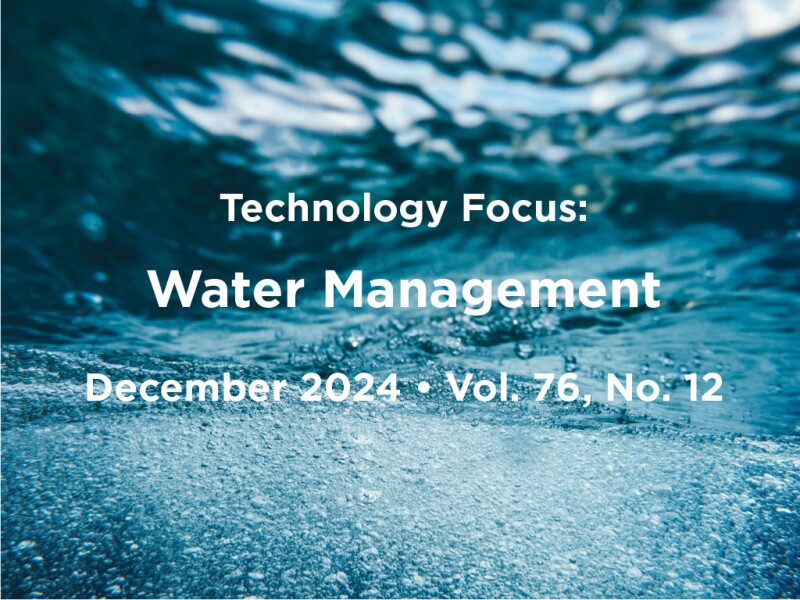Looking back at our industry’s approach to produced water over the past several decades reveals a subtle but persistent transformation. The industry no longer considers the water as only a logistical problem, mostly pushed to the facilities or operations teams. Now, it is a front-and-center component of any life-cycle planning, with multiple pathways addressed by subsurface control, surface treatment technologies, reuse, injection, and safe environmental discharge. This paradigm shift in our industry is a direct result of coming to the realization of its own dependence on having an effective, economic, and sustainable plan for managing the water life cycle.
Just in the past several months in the Gulf of Mexico, we have seen the commencement of several high-profile waterflood projects by major regional operators. This comes on the heels of the most recent action taken by the US Environmental Protection Agency to introduce a revised version of its discharge permit for the region.
Across the land and in the prolific basins of Oklahoma, Texas, and New Mexico, regulatory frameworks are evolving to curtail seismicity induced by water injection. In Latin America, major operators continue to evolve with the changing guidelines and environmental regulations, committing to long-term sustainability goals such as a reduction in freshwater withdrawal, recycling and reuse, and efforts to improve discharged-water quality and develop advanced monitoring techniques. In the Middle East, major operators continue to improve water-management practices to maximize the use of this scarce resource for their operations and pursue improved water quality for environmental discharge. The North Sea region continues with water recycling and reuse as the cornerstone of planning and a risk-based approach to environmental discharge.
Contrary to the common theme that associates the water problem with the large volumes produced—albeit, in most cases, larger than the oil production—the drivers influencing the planning for the water cycle have much more diversity than just the volumes. For most cases in the past, the simplistic technoeconomic approach was sufficient on its own by merely proposing the best available and economically viable solution. This approach no longer satisfies the broader social and environmental demands affecting the outcome. In fact, today, a concerted socio‑technoeconomic group of drivers is dictating our planning for the water life cycle of any project.
As the industry continues with the quest for technological innovations for more cost-efficient solutions at the operational level, it must do so with full adherence to evolving regulations and by prioritizing environmental protection.
I have selected a few of the most recent papers in support of these megatrends affecting oilfield water management.
Paper SPE 221002 provides an example of a decision matrix for an operator to define and design its produced-water-treatment strategy. It also provides a universal and comprehensive review of produced-water-management risks and challenges, not as an end-of-pipe solution but as comprehensive, multidimensional planning that must address technical challenges while maintaining economic viability within the confines of the regulatory framework of the region.
Paper SPE 218794 provides a unique window to the application of the Internet of Things, including radio-frequency identification and global-positioning-system sensors for subsurface intelligent completions, and its deployment in deepwater Gulf of Mexico. It describes a real-life example of the deployment of such intelligent completions for zonal isolation as a component of subsurface water-management techniques.
Paper SPE 218979 describes the environmental impact of sheening from overboard water discharge as the result of water-soluble organics. It provides a detailed chemical-treatment approach as a strategy in water management for overboard discharge.
This Month’s Technical Papers
Study Explores Sustainable Solutions for Managing Contaminants in Produced Water
Gulf of Mexico Case Study Highlights Smart-Completion Application
Chemical Treatments Offer Alternative to Acidification for Sheen Control
Recommended Additional Reading
SPE 218616 Produced Fluid, Water Treatment Plant, and Boiler Feed Water for Steam-Generation Management at Mukhaizna Heavy Oil Field by M. Al-Asimi, Occidental, et al.
SPE 219062 Water-Injection Optimization Based on Operational Key Performance Indicators by C.J.A. Furtado, Petrobras, et al.

Shaya Movafaghian, SPE, is technology director for Cetco Energy Services. His focus is on innovation, development, and deployment of products and services for the upstream oil and gas sector. Movafaghian has held various positions with Occidental, Veolia, Baker Hughes, and Cameron. He holds a master’s degree in petroleum engineering from the University of Tulsa and a master’s degree in business administration from the Keller Graduate School of Management. Movafaghian is a member of the JPT Editorial Review Board and currently serves as chairman of the SPE Water Life Cycle and Strategy Technical Section. He is a contributing member of SPE and has served various committees and technical disciplines over the past 29 years.

